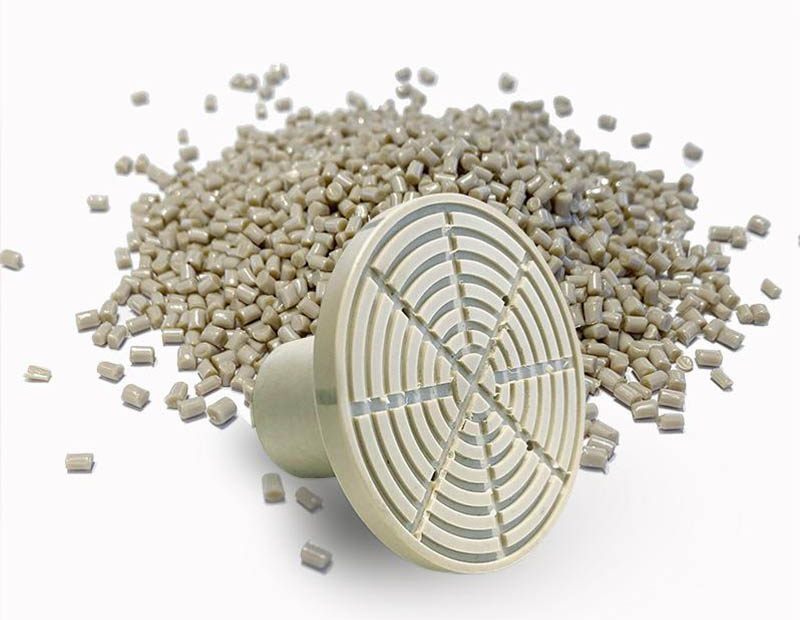Polyetheretherketone (PEEK): A High-Performance Engineering Polymer
Polyetheretherketone (PEEK) is a semi-crystalline thermoplastic polymer belonging to the polyaryletherketone (PAEK) family. Developed in the late 1970s by Victrex PLC, PEEK has become one of the most widely used high-performance polymers due to its exceptional combination of mechanical, thermal, and chemical properties.

Key Characteristics of PEEK
1. Mechanical Properties
PEEK exhibits outstanding mechanical strength and stiffness. Its tensile strength ranges from 90-100 MPa, with a flexural modulus of 3.6-4.0 GPa. The material maintains these properties across a wide temperature range, with only 15-20% reduction in tensile strength at 150°C compared to room temperature.
2. Thermal Stability
PEEK has a glass transition temperature (Tg) of 143°C and a melting point of 343°C. It can operate continuously at temperatures up to 250°C and withstand short-term exposure to 300°C. The thermal conductivity is approximately 0.25 W/m·K, while the coefficient of thermal expansion ranges from 40-60 × 10-6/°C.
3. Chemical Resistance
PEEK demonstrates excellent resistance to most organic and inorganic chemicals, including hydrocarbons, acids, and bases. It shows less than 1% weight gain after 24 hours immersion in water at 23°C and maintains good dimensional stability with water absorption typically below 0.5% at saturation.
4. Wear and Friction Properties
With a coefficient of friction against steel of approximately 0.2-0.3 and excellent wear resistance (specific wear rate of 1-5 × 10-6 mm3/Nm), PEEK is ideal for tribological applications. These properties can be further enhanced with fillers like carbon fiber or PTFE.
5. Electrical Properties
PEEK has a volume resistivity of 1016 Ω·cm, dielectric strength of 20 kV/mm, and dielectric constant of 3.2-3.3 at 1 MHz, making it suitable for high-voltage electrical applications.
Applications of PEEK
Aerospace Industry
PEEK is extensively used in aerospace components due to its lightweight nature (density of 1.32 g/cm3) and flame resistance (UL94 V-0 rating). Applications include:
Cable insulation for aircraft wiring
Bearing retainers and bushings
Fuel system components
Structural brackets and fasteners
Medical Applications
PEEK's biocompatibility (ISO 10993 certified) and radiolucency make it ideal for medical devices:
Spinal fusion cages with elastic modulus (3-4 GPa) similar to cortical bone
Dental healing abutments and prosthetics
Surgical instrument components sterilizable by autoclave (up to 134°C)
Trauma fixation devices
Oil and Gas Industry
PEEK components withstand harsh downhole conditions:
Seals and back-up rings for pressures up to 20,000 psi
Electrical connectors in logging tools
Valve seats and wear rings
Insulators for high-temperature sensors
Automotive Sector
PEEK helps reduce weight and improve efficiency:
Transmission components (gears, thrust washers)
Turbocharger components
Fuel system parts (pump gears, valve plates)
Electrical connectors in engine compartments
Electronics and Semiconductor
PEEK's purity and thermal stability are valuable in electronics:
Wafer carriers and handling components
Insulators for high-voltage connectors
Coil bobbins and sensor housings
3D printing of functional prototyPES
Maintenance and Care of PEEK Components
Cleaning Procedures
For optimal performance and longevity:
Use mild detergents or isopropyl alcohol for cleaning
Avoid strong acids (concentration > 60%) and oxidizing agents
Ultrasonic cleaning is effective at frequencies below 40 kHz
For medical applications, follow validated sterilization protocols
Storage Conditions
Proper storage prevents degradation:
Store in original packaging at temperatures below 40°C
Maintain relative humidity below 50%
Protect from UV exposure to prevent surface degradation
For critical applications, dry parts at 150°C for 4 hours before use if exposed to moisture
In-Service Monitoring
Regular inspection helps identify wear or damage:
Check for surface cracks or discoloration indicating thermal degradation
Monitor dimensional changes exceeding 0.5% in critical applications
For bearing applications, measure wear depth not exceeding 0.1 mm
In electrical applications, verify insulation resistance remains above 1012 Ω
Replacement Guidelines
Consider replacement when:
Visible cracks or permanent deformation occurs
Wear exceeds 10% of critical dimensions
Chemical exposure causes swelling above 2% by volume
Electrical properties degrade beyond acceptable limits






